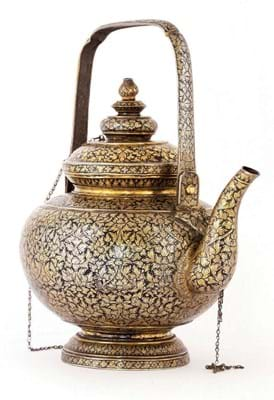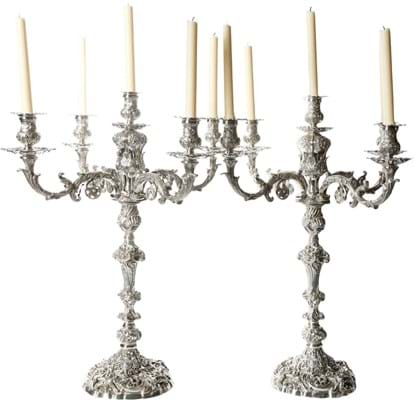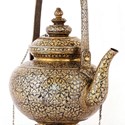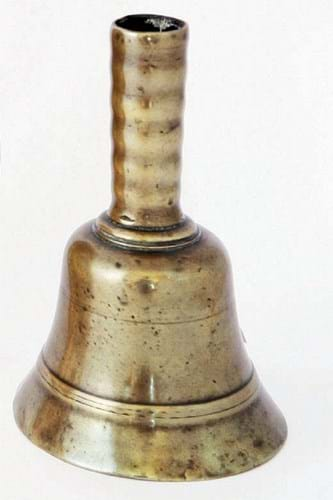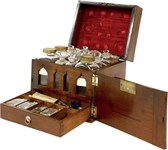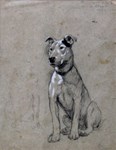The 6in (15cm) high, 19.5oz teapot by Aberdeen smith George Cooper, with acanthus hinge and cone finial and ivory insulators to the scroll handle more than doubled top hopes at £3200.
The candlesticks, 9in (22.5cm) tall, weighing 36.5oz, were typical Cafe works with hexagonal cast shell bases and baluster knopped stems. They doubled the mid-estimate at £3000.
The Oriental teapot was simply described as an Asian silver and niello worked pedestal teapot and cover, late 19th century, 10in (26cm) tall and estimated at £100-300.
However, it caught at last two bidders’ eyes and sold at £7500.
“We believe now they were Thailand pieces – that is where the pre-sale interest came from,” said Guy Schooling of Sworders. “However, they eventually sold online to a Continental buyer against a Thailand underbidder.”
Royal connection
The reaction to the best piece of silver, a pair of London 1824 five-light candelabra was more expected – not least because it bore a royal coat of arms.
To which of George IV’s five brothers the arms belonged is hard to define because the silversmiths, Charles and John Fry II, apparently neglected to include the identifying cadency mark.
Nevertheless, the 2ft 6in (76cm) high candelabra, richly cast and chased with rocaille and floral ornament, were of outstanding quality and, against a £15,000-20,000 estimate, sold to the London trade at £37,000.
A more humble metal provided a greater surprise.
Brass was where the big money was, at least in the case of an 8¼in (21cm) diameter alms dish offered with a 6in (15cm) table bell-cum-candlestick. Both were listed as probably 17th century and the lot was pitched at £100-300.
“The candlestick bell was what bidders wanted,” said Schooling after the lot sold at £6200 to a specialist UK dealer, who said it dated from c.1640.


